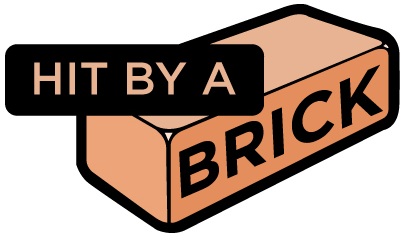“Don’t speak to me that way!” (Customer Communications)
/Thanks primarily to digital everything, marketers like you have dozens of communications channels available. But which channels are best for marketing your product, service, or cause? There is no single, correct answer. But there is one can’t-miss process: Your company’s marketing team needs to get out there and discover how your target audience wants to be engaged. To communicate effectively (and be heard) you really need to know what your customers are reading, watching, and listening to. So, why not just ask them?
1. Ask your customers
Traditionally trained marketers had it easy. They had a limited number of ways to communicate with their customers and prospects. Their choices were print, broadcast, and outdoor. Toss in video for those occasional “how-to” messages. Yup, that was it.
The communication channels today are so much more exciting, diverse, and plentiful. Here are six ways to get the information you need to successfully communicate with current and prospective customers:
Use an online survey platform. SurveyMonkey® is one example. Survey platforms and online forms offer a clean, paper-free way to collect and organize data.
Embed a survey in an email.
Use the phone. But arrange a call time in advance and be sure the customer knows exactly what to expect and how long the call will take. You’ll have to manually tabulate the responses, but this method has the added benefit of giving you talk time with your customers that might prove valuable in other ways.
Search the Internet.
Ask trade associations that serve your industry. Some will have data that you might find useful.
Try a paper survey. (Hey, it just might work.) Design it to be fun. Even a bit irreverent.
2. Getting specific
At its most basic you should be trying to discover two things:
Which communications channels do your customers use?
Which communications channels do your customers use the most?
You might ask the customer to name his or her favorite ways to receive information, and the responses might be “email, text messaging, Twitter, Facebook, television, and Instagram.” Or you could take a more detailed approach and list all of the channel options, then ask the customer to rate each one based on whether that customer is an ALWAYS, FREQUENTLY, OCCASIONALLY, or NEVER user. Or use a simpler YES, MAYBE, NO approach. (If you don’t have the resources on staff to get everything done, reach out to your favorite internet marketing firm.)
3. Offer an incentive?
Your customers are sharp. They’ll see right through you. And they’ll assume that you’ll soon bombard them with a painful supply of self-serving sales pitches. So be honest about your intentions while explaining that your primary goal is to ensure that you and your clients are communicating in the most efficient way possible. You may even offer an incentive to participate. How about an invitation to an annual party? Purchase discount? Access to special content?
4. Internal communications, too
We’ve talked about your external audiences, but it’s also a good idea to take a look at your internal peer-to-peer communications. Just take your co-workers, then find out (and make a note of) what touch points they respond to. Your co-workers are your not-so-random sample.
For example, the CEO checks email frequently, but not religiously. Facebook and Twitter? Not happening much. Company emergency? Call his cell phone. Texting is also good. And then there’s associate Haylie. She’s a voracious user of all of the above, although phone calls to Haylie’s cell don’t get much attention. Add Instagram and Pinterest to Haylie’s list.
It’s a big win any time you can improve communication between you and your customers. You’ll learn more about them. And they’ll learn more about you. Learn to use the right communications channels and you’ll solidify and streamline the relationship going forward.
(Thanks to Propel Marketing (now ThriveHive) for allowing me to post this blog post as a guest blogger!)
Author Joe Starin heads up Hit by a Brick, an independent copywriting resource.

